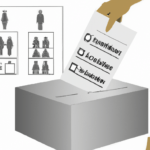An electoral system is a method used to determine how votes are cast, counted, and translated into seats. It plays a crucial role in shaping democratic processes and outcomes. There are various types of electoral systems, such as plurality/majority, proportional representation, and mixed systems. Plurality/majority systems, like in the United States and the United Kingdom, rely on single-member districts where the candidate with the most votes wins. Proportional representation systems, as seen in countries like Germany and New Zealand, allocate seats based on the percentage of votes received by each party. Mixed systems combine elements of both. The choice of electoral system can have significant implications for representation, inclusiveness, and the overall functioning of democracy.
Table of Contents
- Electoral reform movements
- Impact of electoral systems on political representation
- Pros and cons of different electoral systems
- Role of electoral systems in democracy
- Types of electoral systems
(The US electoral system explained)
An electoral system is the set of rules and processes used to determine how people elect their representatives. It plays a crucial role in shaping democracies worldwide. One commonly used electoral system is the proportional representation system.
In this system, political parties gain seats in proportion to the number of votes they receive. This ensures that each party is represented fairly in government. It allows for a diverse range of political perspectives and encourages cooperation among parties.
Another commonly used system is the first-past-the-post system. In this system, the candidate who receives the most votes wins the seat, regardless of the percentage of votes received. This can lead to a majority government, but it can also result in a lack of representation for minority groups.
Some countries use a hybrid system that combines elements of proportional representation and first-past-the-post. This allows for greater representation for smaller parties while still maintaining a stable government.
Electoral systems are not without their challenges. They can be susceptible to gerrymandering, where electoral boundaries are manipulated to favor a particular party. This can reduce the fairness and integrity of the electoral process.
Overall, the electoral system is a crucial aspect of democracy. It determines how people’s voices are heard and how power is distributed. By understanding and improving electoral systems, we can ensure that governments are truly representative of the people they serve.
Electoral reform movements
Electoral reform movements aim to enhance the fairness and effectiveness of the electoral system. These movements advocate for changes in various areas, such as campaign finance, voter registration, and redistricting. They seek to reduce the influence of money in politics, expand access to voting, and ensure that electoral boundaries are drawn fairly.
One aspect of electoral reform movements is campaign finance reform. Advocates argue that large campaign contributions from corporations and wealthy individuals can distort the political process. They propose limits on campaign donations, increased transparency in political spending, and public financing of campaigns to level the playing field.
Another focus of these movements is voter registration. They aim to make it easier for eligible citizens to register and cast their votes. This may involve automatic voter registration, online registration, or same-day registration. The goal is to increase voter turnout and ensure that all voices are heard in the electoral process.
Redistricting is another area where electoral reform movements seek change. Some argue that gerrymandering – the practice of manipulating electoral boundaries to favor one party – undermines democratic representation. These movements push for independent redistricting commissions to draw electoral boundaries in a non-partisan manner, promoting fair competition and representation.
Electoral reform movements often gain momentum after controversial elections or instances of voter suppression. They mobilize people through grassroots organizing, advocacy campaigns, and legal challenges. Their efforts can lead to significant changes in electoral laws and policies.
Critics of electoral reform movements argue that these changes may disrupt the status quo and introduce unintended consequences. They contend that campaign finance limits may infringe on free speech rights and that changes in voter registration and redistricting may favor one political party over another. However, supporters argue that such reforms are essential for a healthy democracy, as they promote fairness, inclusivity, and the accountability of elected officials.
Overall, electoral reform movements play a crucial role in shaping the electoral system. As citizens become more engaged and aware of the importance of fair elections, these movements continue to advocate for changes that make voting more accessible and the electoral process more transparent. By addressing issues such as campaign finance, voter registration, and redistricting, electoral reform movements strive to uphold the democratic principles on which our society is built.
Impact of electoral systems on political representation
Electoral systems play a crucial role in shaping political representation, impacting the way citizens’ voices are heard in governance. The choice of an electoral system determines how votes are translated into seats, directly affecting the composition and diversity of elected bodies.
Firstly, proportional representation (PR) systems promote fairness by ensuring that parties or candidates receive seats in proportion to their share of the popular vote. This enhances representativeness by allowing a wide range of views to be included in decision-making. PR systems are often adopted in countries with diverse populations, as they facilitate the inclusion of minority voices.
On the other hand, majoritarian systems such as first-past-the-post (FPTP) tend to favor larger parties, often resulting in the domination of a single party or limited representation for smaller parties. This can lead to feelings of exclusion among voters who support minority or smaller parties, and limits the diversity of perspectives in decision-making bodies.
Furthermore, the impact of electoral systems on political representation extends beyond the party level. In PR systems, political parties are incentivized to create inclusive candidate lists that reflect the diversity of the population. This promotes the participation of underrepresented groups such as women, ethnic minorities, and marginalized communities, leading to a more representative political landscape.
Conversely, majoritarian systems may inadvertently reinforce existing inequalities by creating barriers for underrepresented groups to enter politics. First-past-the-post systems often rely on single-member constituencies, which can disadvantage candidates from marginalized communities, who may struggle to gather widespread support in specific geographical areas.
The choice of an electoral system also affects voter behavior. In PR systems, voters have a broader range of choices, as they can vote for individual candidates within parties. This direct candidate-centered approach fosters stronger accountability and a closer connection between representatives and their constituents.
In majoritarian systems, voters are typically limited to choosing one candidate per constituency, leading to strategic voting and a focus on voting for the most viable option rather than their preferred candidate or party. This can result in a disconnect between voters and elected representatives, diminishing the extent to which citizens feel adequately represented.
In conclusion, the impact of electoral systems on political representation is significant. The choice of an electoral system determines the fairness, inclusivity, and accountability of the political process. Proportional representation systems enhance representativeness, inclusivity, and diversity, while majoritarian systems can concentrate power and limit political diversity. It is essential to carefully consider the impact of electoral system choices to ensure that citizens’ voices are adequately represented in the decision-making process.
Pros and cons of different electoral systems
Different electoral systems have their own strengths and weaknesses. One commonly used system is the first-past-the-post (FPTP) method. This system is simple and easy to understand. However, it can lead to results that do not accurately reflect the overall views of the population. Another drawback is that it often leads to a two-party system, limiting the choices available to voters.
Another option is proportional representation (PR). This system ensures that the number of seats a party gets is proportional to the number of votes it receives. This allows for greater representation of various political parties and can lead to a more diverse and inclusive government. On the downside, PR can result in coalition governments, which may lead to slower decision-making and compromise.
The ranked choice voting (RCV) system is gaining popularity in some countries. With RCV, voters rank candidates in order of preference. This system ensures that the elected candidate has majority support. It also encourages positive campaigning as candidates need to appeal to voters beyond their supporters. However, it can be more complex for voters to understand and implement, and the counting process can be more time-consuming and expensive.
Mixed-member proportional (MMP) is a hybrid system used in some countries. It combines elements of both PR and FPTP. Voters have two votes, one for a local representative and one for a party. This system allows for the representation of both individual local interests and national party interests. However, it can be confusing for voters to comprehend, and the allocation of seats can be subject to manipulation by political parties.
Another system is the single transferable vote (STV). This system allows voters to rank candidates in multimember constituencies. It ensures that candidates with a broad base of support are more likely to be elected. STV promotes greater voter choice and can lead to more diverse representation. However, it can be complex for voters to understand, and the counting process can be time-consuming.
In conclusion, each electoral system has its own advantages and disadvantages. The choice of system depends on the desired outcome, as well as the specific needs and preferences of a country. It is important for citizens to be educated about the different systems to make informed decisions on electoral reform. Ultimately, the goal should be to ensure fair and representative elections that accurately reflect the will of the people.
(The Electoral College, explained)
Role of electoral systems in democracy
Electoral systems play a crucial role in the functioning of a democracy. They determine how votes are translated into seats, ultimately shaping the composition of representative bodies.
One important aspect of electoral systems is their impact on the representation of diverse political views. Proportional representation systems, for instance, aim to ensure a fair distribution of seats based on the share of votes received by each party. This allows for the inclusion of a wide range of parties and prevents the domination of a single party or perspective. In contrast, winner-takes-all systems, like the plurality system, can sometimes excessively favor the majority party at the expense of minority voices.
Furthermore, electoral systems also influence the competitiveness of elections. Systems that encourage multiple parties and coalition-building tend to promote more competitive races, where candidates from different parties have a realistic chance of winning. This can lead to increased voter engagement, as citizens feel that their vote truly matters and can make a difference. On the other hand, systems that discourage the formation of strong opposition parties may result in less competitive elections and decreased citizen involvement.
Another aspect to consider is the impact of electoral systems on accountability and stability. Some systems, such as first-past-the-post, can provide a clear mandate to the winning party, allowing for stable and decisive governance. However, these systems may also result in a lack of diverse viewpoints and can potentially exclude minority interests. In contrast, systems like proportional representation can foster a more inclusive political system, but may require coalition-building and compromise, which can lead to occasional instability and slower decision-making.
Moreover, electoral systems can also affect the representation of underrepresented groups, such as women and minorities. Certain systems, like electoral quotas or reserved seats, can be implemented to ensure better representation and give a voice to those who have historically been marginalized. These measures aim to create a more diverse and inclusive political landscape, reflecting the true makeup of society.
In summary, the role of electoral systems in democracy is multifaceted. They impact the representation of political views, the competitiveness of elections, accountability, stability, and the inclusion of marginalized groups. Ultimately, the choice of an electoral system should aim to strike a balance between effective and inclusive governance, while ensuring the vital principles of democracy are upheld.
Types of electoral systems
Types of electoral systems vary around the world, with each system having its own unique characteristics and impacts on the outcome of elections. One commonly used system is the first-past-the-post system, also known as the winner-takes-all system. In this system, the candidate who receives the most votes in a constituency wins the election, regardless of the margin of victory. This system tends to favor larger parties, as smaller parties may struggle to win seats even if they have a significant share of the overall vote.
Another system is the proportional representation system, which aims to ensure that the number of seats won by a party reflects the proportion of votes it receives. This system allows for greater representation of minority parties, as they have a chance to win seats even if they do not have a majority of the votes in any particular constituency. However, it can also lead to a fragmented parliament with multiple parties and potentially unstable coalitions.
A variant of proportional representation is the mixed-member proportional system. Under this system, voters have two votes – one for a candidate in their constituency and one for a party. The seats in the parliament are then allocated based on a combination of the constituency votes and the party votes. This system combines the benefits of proportional representation with the advantages of local representation.
Another system worth mentioning is the preferential voting system. In this system, voters rank candidates in order of preference, and if no candidate receives an absolute majority of first-preference votes, the candidate with the fewest votes is eliminated, and their votes are redistributed according to the next preference indicated on the ballots. This process continues until a candidate receives an absolute majority. This system encourages candidates to appeal to a broad range of voters, as they may rely on second or third preferences to win the election.
There are also other variations and combinations of these systems used in different countries, each with its own strengths and weaknesses. The choice of electoral system can have significant implications for the representation of different groups within a society and the overall stability of the political system. Therefore, it is important for policymakers to carefully consider the specific context and goals of their electoral system when choosing or reforming the system.













